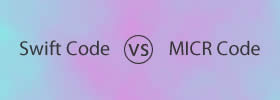Difference between Heart Attack and Heart Failure
Key Difference: Heart attack is when the blood flow to the heart is restricted causing the heart cells to die. The lack of blood flow is caused by a partial blockage to the a coronary artery causing the rupture of a vulnerable atherosclerotic plaque, an unstable collection of lipids and white blood cells in the wall of an artery. Heart failure is a condition when the heart is unable to provide a sufficient pump action to maintain the blood flow, dropping the pressure by which the blood moves through the body. Heart failure is also known as congestive heart failure (CHF) or congestive cardiac failure (CCF).
Heart attack and heart failure are two medical terms that are related to the loss of heart function. Heart is an important organ in the body and the moment it stops working properly it affects all the other organs in the body. It alters the function of every other body organ or tissues. Heart attack and heart failure are often confused as they both sound like similar terms and are both related to the heart. However, these are two different conditions and should not be confused in the least. Heart attack is when the heart is unable to receive blood due to a blockage in one of the major arteries. Heart failure is when the heart fails to properly pump oxygenated blood through the body.
 Heart attack is when the blood flow to the heart is restricted causing the heart cells to die. The lack of blood flow is caused by a partial blockage to the a coronary artery causing the rupture of a vulnerable atherosclerotic plaque, an unstable collection of lipids and white blood cells in the wall of an artery. Heart attack is also known as Myocardial infarction (MI) or acute myocardial infarction (AMI). The reduced blood flow results in restricted oxygen supply to the heart, which manifests itself as severe pain and discomfort in the chest. This pain can then spread to the shoulders, arms, neck, jaw, or back.
Heart attack is when the blood flow to the heart is restricted causing the heart cells to die. The lack of blood flow is caused by a partial blockage to the a coronary artery causing the rupture of a vulnerable atherosclerotic plaque, an unstable collection of lipids and white blood cells in the wall of an artery. Heart attack is also known as Myocardial infarction (MI) or acute myocardial infarction (AMI). The reduced blood flow results in restricted oxygen supply to the heart, which manifests itself as severe pain and discomfort in the chest. This pain can then spread to the shoulders, arms, neck, jaw, or back.
Let’s simplify what happens during a heart attack. Plague made up of calcium, proteins and inflammatory cells cover the lining of the arteries, where they are deposited when the blood flows to the heart. The plague lining becomes hard after constant deposition and then cracks. The ruptured plague gets built up in the arteries blocking the blood from going through to the heart valves. The oxygenated blood never reaches the heart, causing the heart to become starved. This is similar to when a person not being able to get oxygen or air. The cells that do not receive the oxygen start to die. Note: This is permanent damage; the cells do not automatically rejuvenate. The dying of the cells manifests itself as pain and discomfort in the chest. Another reason for a heart attack could be a severe spasm or tightening of a coronary artery. The spasm cuts off blood flow through the artery, which leads to an attack. These spasms can occur in coronary arteries that do not have plaque built up.
Symptoms of a heart attack include: Discomfort (chest, arm, below the breastbone, back, jaw, throat and/or arm), pressure, heaviness, pain (chest, arms and/or below the breastbone), sweating, nausea, vomiting, shortness of breath, irregular heartbeats. During a heart attack, the symptoms last 30 minutes. Some people may also have a heart attack without any symptoms; these are known as ‘silent’ heart attacks and are common in diabetic patients.
 Heart failure is a condition when the heart is unable to provide a sufficient pump action to maintain the blood flow, dropping the pressure by which the blood moves through the body. Heart failure is also known as congestive heart failure (CHF) or congestive cardiac failure (CCF). In layman’s terms, the heart has become weaker and is not able to pump with the same power as it was able to before. As it the heart pumps blood slower, the blood moves slower throughout the whole body. This causes the blood tissue to suffer ischemia, or thinning of the blood. This may cause the heart chambers to stretch to hold more blood or become stiff and thickened. The weakening of the heart pressure causes the kidneys to retain water and salt, causing fluid to build up in the arms, legs, ankles and feet.
Heart failure is a condition when the heart is unable to provide a sufficient pump action to maintain the blood flow, dropping the pressure by which the blood moves through the body. Heart failure is also known as congestive heart failure (CHF) or congestive cardiac failure (CCF). In layman’s terms, the heart has become weaker and is not able to pump with the same power as it was able to before. As it the heart pumps blood slower, the blood moves slower throughout the whole body. This causes the blood tissue to suffer ischemia, or thinning of the blood. This may cause the heart chambers to stretch to hold more blood or become stiff and thickened. The weakening of the heart pressure causes the kidneys to retain water and salt, causing fluid to build up in the arms, legs, ankles and feet.
Heart failure is actually a wrong term to describe the condition as it does not consist of the heart stopping completely. In a heart failure, the pressure by which the heart pumps blood throughout the body reduces as the heart weakens. The weakening pressure reduces the speed with which the blood flows through the body, causing many tissues and organs to not receive properly oxygenated blood. The reduction in oxygenated blood causes the kidneys to retain fluids, which causes swelling in the lower body. Heart failures are often onset by heart attacks, coronary artery diseases, high blood pressure, valve diseases, etc. Depending on the symptoms, heart failure can affect the left side ventricle or the right side ventricle. The left-side failure can cause the heart to become enlarged and overlaps with the right-side failure. The left-side failure can cause the right-side ventricle to fail as well. The right-side failure is more commonly associated with the retention of fluids and swelling underneath the skin.
There are two types of heart failure: Systolic dysfunction and Diastolic dysfunction. Systolic dysfunction is when the heart muscle does not contract with enough force, resulting in less-oxygen rich-blood to flow through the body. Diastolic dysfunction is when the heart contracts normally but the ventricles are stiff reducing the flow pressure to the rest of the body. Heart attacks can be diagnosed using blood tests, chest X-rays, echocardiogram, Ejection Fraction (EF), electrocardiogram, Cardiac catheterization and stress test.
Symptoms of heart failure include: tachypnea (increase rate of breathing), Rales, crackles, pulmonary edema (fluid in the alveoli), hypoxemia, apex beat, gallop rhythm, dyspnea, breathlessness (on lying down), wheezing, coughing, dizziness, fainting, confusion, jugular venous pressure, swelling in the feet, ankle, legs, etc., enlargement of liver, etc. Treatment includes lifestyle changes, light exercises, medications, dietary changes, pacemakers and heart transplant in the last stages.
Image Courtesy: skepticalraptor.com, terumoheart.com









Add new comment